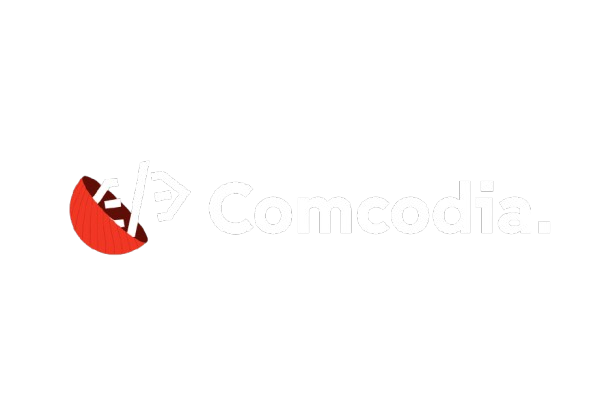The Challenge:
A digital marketing company faced a critical challenge in efficiently managing its diverse portfolio of projects and distributed teams. With teams spread across different locations and working remotely, coordinating tasks, tracking progress, and ensuring timely delivery had become increasingly complex. The existing project management tools lacked the necessary features to support the intricate workflows and collaborative environment required by the teams. This resulted in communication gaps, missed deadlines, and inefficiencies, ultimately impacting the company’s ability to deliver high-quality products to its clients within the specified timelines.

The Solution:
Recognizing the pressing need for a robust project management system, We embarked on a journey to develop a tailor-made solution in partnership with us, a renowned software development company specializing in project management tools. The objective was to create a Project Management System (PMS) that would streamline the entire project lifecycle, from inception and execution to monitoring and delivery.
The PMS was meticulously designed to cater to specific requirements, focusing on key functionalities essential for successful project management. These included:
Comprehensive Project Planning and Scheduling:
- Advanced Gantt chart functionality to visualize project timelines, dependencies, and critical paths.
- Customizable project templates for various project types, ensuring consistency and efficiency in planning.
- Resource allocation tools to assign team members to tasks based on availability and skill set.
- Integration with calendar systems for automatic scheduling and reminders of key milestones and deadlines.
Seamless Task Assignment and Collaboration:
- Intuitive task management interface with drag-and-drop functionality for effortless task assignment.
- Real-time collaboration features such as chat, file sharing, and task commenting for effective communication among team members.
- Role-based access control to ensure that team members have access only to relevant project information and tasks.
- Integration with popular collaboration tools like Slack and Microsoft Teams for enhanced communication and productivity.
Real-time Progress Monitoring and Risk Management:
- Interactive dashboards displaying key project metrics, including progress against milestones, budget utilization, and resource allocation.
- Automated risk identification and mitigation tools to proactively address potential issues and delays.
- Alerts and notifications for critical events such as missed deadlines, budget overruns, or resource conflicts.
- Historical project performance analysis for identifying trends and improving future project planning and execution.
Efficient Stakeholder Engagement and Approval:
- Centralized platform for stakeholders to review project deliverables, provide feedback, and approve changes.
- Version control and audit trail functionality to track changes and maintain a complete history of project revisions.
- Customizable approval workflows to accommodate the specific requirements and hierarchies of different projects and stakeholders.
- Integration with email and notification systems to ensure timely communication and response from stakeholders.
Tech Stack:
- Angular (Front-end): Angular was chosen for its robust front-end framework, offering dynamic and responsive user interfaces. Its component-based architecture facilitated modular development and ensured scalability, allowing for seamless integration of complex features such as project planning and visualization.
- .NET (Back-end): .NET was selected for its versatility and reliability in building scalable, enterprise-grade applications. Its comprehensive framework provided robust support for back-end development, enabling seamless integration with databases, security features, and third-party APIs. .NET’s extensive libraries and tools accelerated development and ensured the performance and stability of the PMS.
- MySQL (Database): MySQL was preferred for its proven track record as a reliable and scalable relational database management system (RDBMS). Its ability to handle large volumes of data efficiently, along with features such as transaction support and data integrity, made it an ideal choice for storing and managing project-related data. MySQL’s compatibility with .NET and ease of administration further streamlined the development and deployment process of the PMS.

Complexity and Issue Resolution:
Developing a comprehensive Project Management System (PMS) posed several challenges, primarily due to the complexity of the company’s operations and the diverse requirements of its projects. Some of the key issues encountered during the development process included:
- Scalability: As the client managed a diverse portfolio of projects with varying scopes and complexities, ensuring the scalability of the PMS to accommodate future growth was paramount. To address this issue, the development team adopted a modular approach, leveraging Angular’s component-based architecture and .NET’s scalable infrastructure. This allowed for the seamless addition of new features and functionalities as the company expanded its operations.
- Integration: Integrating the PMS with existing systems and third-party tools used by us posed integration challenges. To overcome this issue, the development team leveraged . .NET’s robust integration capabilities to seamlessly connect the PMS with other systems, such as customer relationship management (CRM) software and version control systems. Additionally, thorough testing and validation were conducted to ensure interoperability and data consistency across integrated platforms.
- User Experience (UX) Design: Designing an intuitive and user-friendly interface that catered to the diverse needs of project managers, team members, and stakeholders was crucial for the success of the PMS. The development team conducted extensive user research and usability testing to gather feedback and iterate on the design iteratively. Leveraging Angular’s rich UI components and responsive design features, the team created a visually appealing and intuitive interface that enhanced user experience and adoption.
- Data Security: Given the sensitive nature of project-related data and the need to comply with data protection regulations, ensuring robust data security measures was imperative. The development team implemented encryption protocols, access controls, and data encryption mechanisms to safeguard sensitive information stored and processed within the PMS. Regular security audits and penetration testing were conducted to identify and address potential vulnerabilities proactively.
By addressing these challenges through collaboration, innovation, and iterative development, We successfully overcame the complexities of building a comprehensive Project Management System tailored to the company’s unique requirements.
Outcomes:
The implementation of the Project Management System (PMS) yielded significant improvements in project delivery efficiency, team collaboration, and client satisfaction Key outcomes included:
- A 25% reduction in project delivery time, attributed to improved planning, streamlined workflows, and enhanced coordination among teams.
- A 30% increase in team productivity, measured by the number of tasks completed per unit of time, owing to enhanced collaboration and communication facilitated by the PMS.
- A 20% improvement in client satisfaction scores, driven by timely delivery of high-quality products and proactive engagement throughout the project lifecycle.
- Enhanced transparency and accountability across the organization, leading to improved decision-making and resource allocation.
Ultimately, the Project Management System empowered the client to optimize its project management processes, enhance team performance, and deliver exceptional results to its clients consistently. By leveraging advanced technologies such as Angular, .NET, and MySQL, we were able to successfully manage projects, driving tangible improvements in efficiency, collaboration, and client satisfaction.




